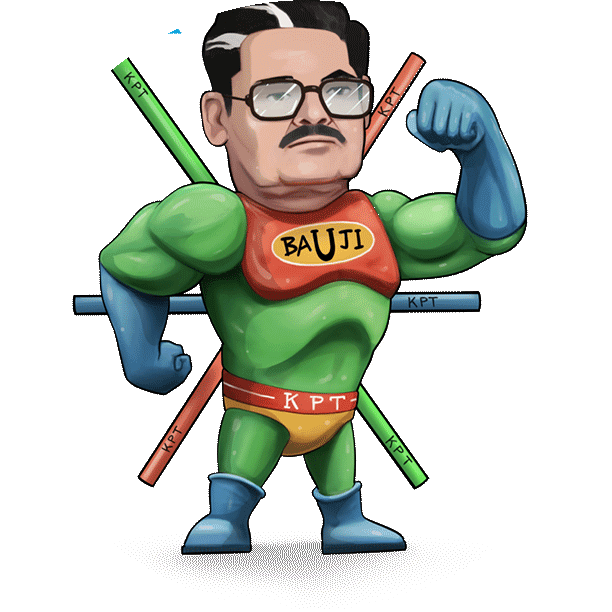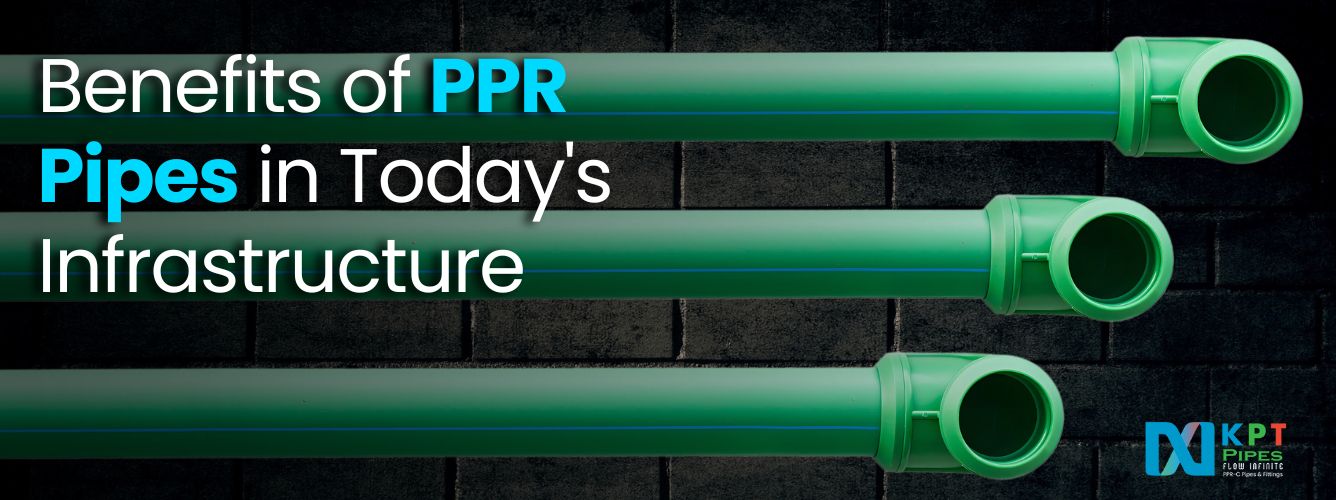In the rapidly evolving landscape of modern infrastructure, the need for durable, efficient, and eco-friendly solutions has never been more critical. Among the many innovations in the plumbing sector, polypropylene random copolymer (PPR) pipes have emerged as game-changers. From their impressive strength to their sustainable attributes, PPR pipes offer a myriad of benefits that make them a preferred choice in today’s infrastructure projects. This blog delves into the key advantages of PPR pipes, highlighting why they are becoming indispensable in modern construction and plumbing systems.
Table of Contents
Toggle1. Exceptional Durability and Strength
A notable characteristic of PPR pipes is their remarkable strength and longevity. Made from a high-quality thermoplastic polymer, PPR pipes are designed to withstand a range of physical stresses. They exhibit impressive resistance to impact, abrasion, and chemical corrosion. This robustness makes PPR pipes ideal for both residential and industrial applications.
The inherent strength of PPR pipes translates to a longer service life compared to traditional materials like PVC or metal pipes. Their ability to handle high-pressure water systems without deforming or leaking ensures that infrastructure projects remain reliable and maintenance-free for extended periods.
2. Superior Temperature Resistance
PPR pipes are widely recognized for their superior thermal resistance. They can handle temperatures ranging from -10°C to 95°C, making them suitable for both hot and cold water applications. This range of temperature resistance is particularly beneficial in climates with extreme temperature variations or in systems where both hot and cold water are used.
The thermal properties of PPR pipes also contribute to their energy efficiency. By maintaining the temperature of the water, PPR pipes reduce the energy required to heat or cool the water, leading to lower energy consumption and reduced utility bills.
3. Corrosion and Scale Resistance
Unlike metal pipes, PPR pipes are highly resistant to corrosion and scaling. Traditional metal pipes often suffer from rust and corrosion over time, especially when exposed to harsh water conditions or chemicals. This can lead to reduced water flow, leaks, and costly repairs.
PPR pipes, on the other hand, do not rust or corrode. This resistance extends their lifespan and ensures that the water quality remains unaffected. Additionally, PPR pipes are less prone to scale build-up, which means that their internal diameter remains consistent, and water flow is not impeded over time.
4. Lightweight and Easy to Install
The lightweight nature of PPR pipes makes them easy to handle and install. Unlike heavy metal pipes, PPR pipes are less cumbersome, reducing the physical strain on workers and minimizing transportation and handling costs. Their ease of installation also speeds up construction and reduces labour costs.
Additionally, PPR pipes are connected through a fusion welding technique, resulting in a continuous and watertight bond. This method ensures that the joints are as strong as the pipes themselves, eliminating the risk of leaks and enhancing the overall reliability of the plumbing system.
5. Eco-Friendly and Sustainable
In an era where sustainability is a key concern, PPR pipes shine as an eco-friendly option. They are manufactured from recyclable materials, and their production process generates minimal waste. Additionally, the energy efficiency of PPR pipes contributes to lower carbon emissions by reducing the need for additional energy to maintain water temperatures.
The longevity and durability of PPR pipes also mean that they do not need to be replaced as frequently as other types of pipes. This reduces the overall consumption of materials and the environmental impact associated with manufacturing and disposal.
6. Cost-Effectiveness
While the initial cost of PPR pipes may be higher than some traditional materials, their long-term cost-effectiveness is significant. The durability and low maintenance requirements of PPR pipes result in lower lifetime costs. Fewer repairs and replacements mean reduced expenditure over the lifespan of the pipes.
Furthermore, the energy efficiency of PPR pipes translates to savings on utility bills. By maintaining water temperatures effectively, they minimize the need for additional energy to heat or cool water, contributing to long-term cost savings for property owners and businesses alike.
7. Versatility in Application
PPR pipes are incredibly versatile and can be used in a wide range of applications. From residential plumbing and heating systems to industrial processes and agricultural irrigation, PPR pipes adapt to various needs with ease. Their compatibility with different types of fittings and accessories further enhances their versatility.
The flexibility of PPR pipes also allows them to be used in complex piping systems, including those with multiple branches or tight spaces. This adaptability makes them a valuable choice for diverse infrastructure projects.
8. Health and Safety Benefits
PPR pipes contribute to a safer and healthier environment. Their resistance to chemical corrosion means that they do not leach harmful substances into the water, ensuring that the water remains clean and safe for consumption. This quality is particularly important in potable water systems where maintaining water quality is crucial.
Additionally, the smooth interior surface of PPR pipes minimizes the risk of bacterial growth and contamination. This characteristic helps maintain high standards of hygiene and safety in plumbing systems.
9. Low Noise Operation
One of the less frequently discussed but notable benefits of PPR pipes is their low-noise operation. The smooth inner surface of PPR pipes significantly reduces the noise created by the flow of water. This is particularly advantageous in residential buildings, commercial spaces, and healthcare facilities where noise reduction is a priority.
The quieter operation of PPR pipes enhances the comfort of living and working environments, making them a preferred choice in settings where noise reduction is crucial for overall well-being.
10. Resistance to UV Radiation
PPR pipes exhibit impressive resistance to ultraviolet (UV) radiation. This property is especially important for applications where the pipes are exposed to sunlight or harsh environmental conditions. UV resistance prevents the degradation and weakening of the pipes over time, ensuring their longevity and reliability in outdoor or partially exposed installations.
This UV resistance makes PPR pipes a suitable option for various applications, including outdoor irrigation systems and exposed plumbing installations, where exposure to sunlight can otherwise lead to material degradation.
Conclusion
As the construction and plumbing industries continue to advance, the need for reliable, efficient, and sustainable solutions becomes increasingly important. PPR pipes stand out as a superior choice due to their exceptional durability, temperature resistance, and eco-friendly attributes. Their versatility, cost-effectiveness, and contribution to health and safety further solidify their position as a preferred material in today’s infrastructure projects.
Embracing PPR pipes is not just a step towards enhanced performance and longevity but also a commitment to sustainability and environmental responsibility. As infrastructure development progresses, the benefits of PPR pipes will continue to drive their adoption, shaping the future of plumbing and construction with strength and sustainability.
Frequently Asked Questions
Q1.How do PPR pipes compare to traditional metal pipes in terms of environmental impact?
Ans: PPR pipes have a significantly lower environmental impact compared to traditional metal pipes. They are made from recyclable materials and their production process generates less waste and requires less energy. Unlike metal pipes, PPR pipes do not rust or corrode, reducing the need for frequent replacements and conserving resources. Additionally, their energy-efficient properties contribute to lower greenhouse gas emissions.
Q2.Can PPR pipes be used in both hot and cold water systems?
Ans: Yes, PPR pipes are suitable for both hot and cold water systems. They have excellent thermal stability, allowing them to handle temperatures ranging from -10°C to 95°C. This makes them versatile for various applications, including residential and commercial plumbing systems where both hot and cold water is required.
Q3.Are PPR pipes safe for drinking water?
Ans: Absolutely. PPR pipes are non-toxic and do not leach harmful chemicals or toxins into the water supply. This makes them safe for use in potable water systems, ensuring that the water remains clean and safe for consumption. Their smooth interior surface also helps maintain high standards of hygiene and reduces the risk of bacterial growth.



